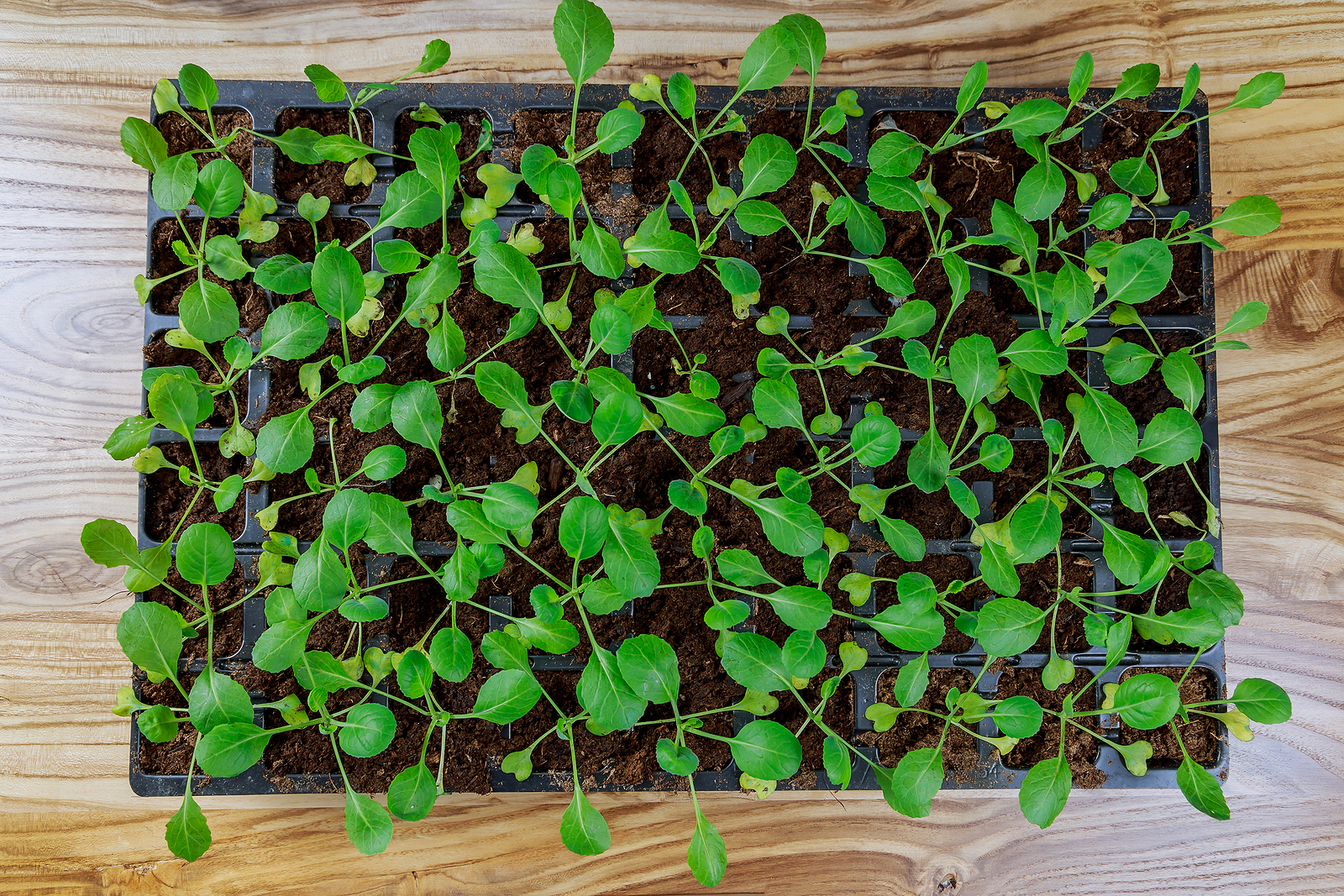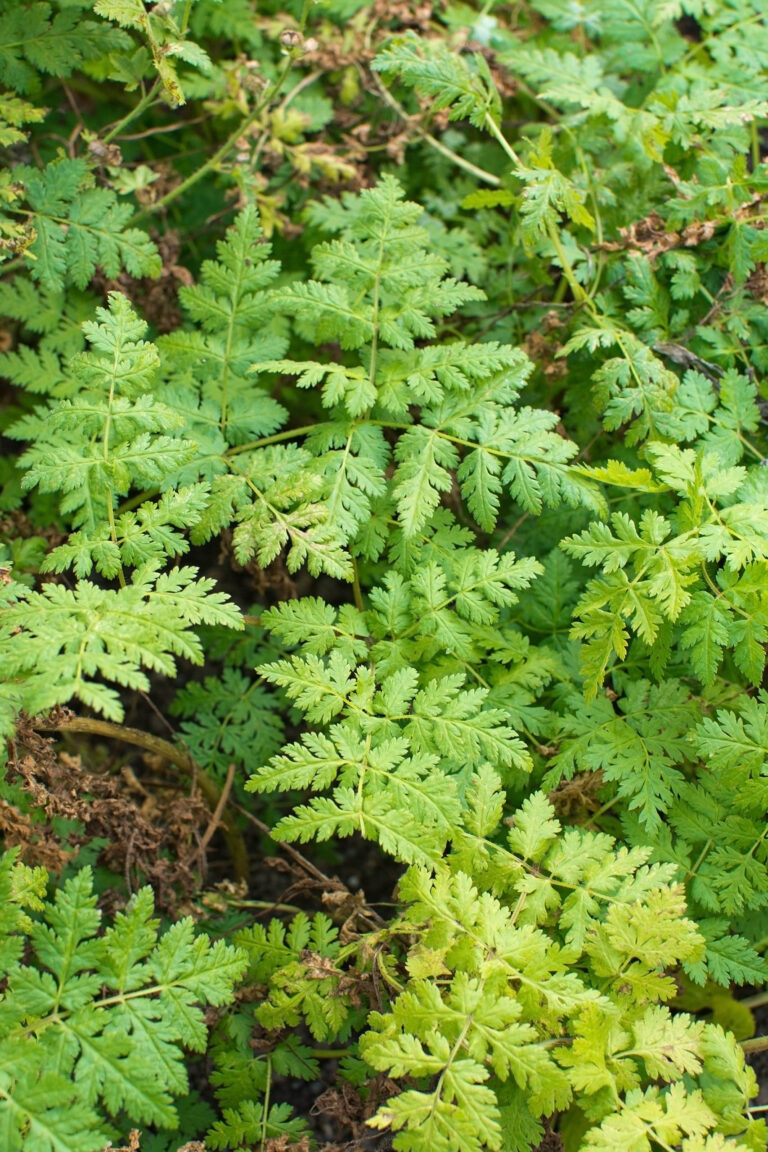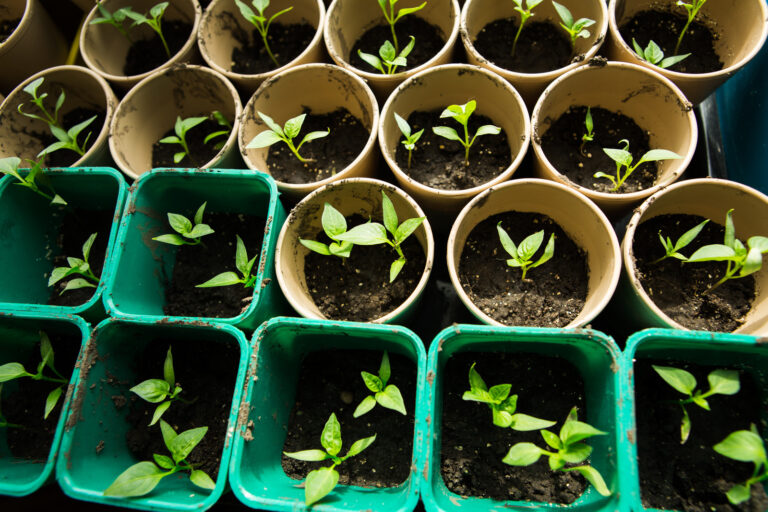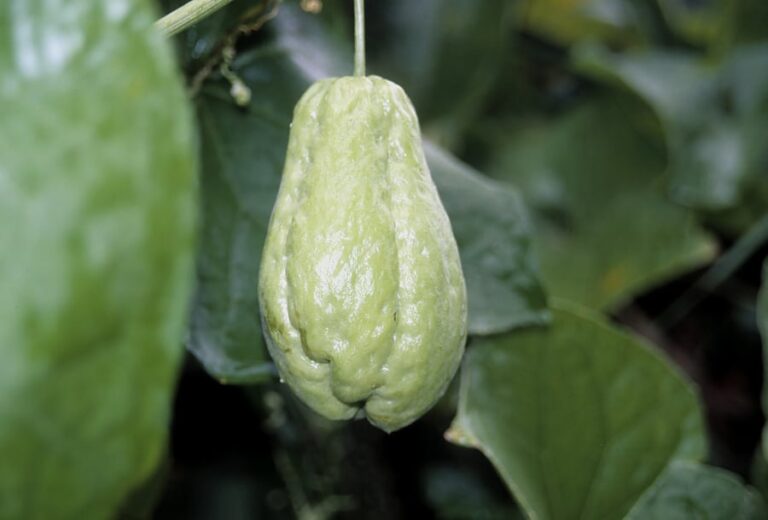Kale Seed Starting Tips
Kale is a hardy cool-weather crop. It can be grown in early spring and in mid to late autumn. Kale tastes especially good after it has been touched by frost.
Sow kale seeds in the garden 4 to 6 weeks before the last frost. Start transplants 6 to 8 weeks before setting out in the garden. Transplants can be set in the garden 5 weeks before to 2 weeks after the last frost.
Kale thrives in loamy soil with some aged compost or aged manure added. Light sandy soil and heavy clay soil can adversely affect leaf flavor. Kale can tolerate partial shade.
Kale articles on Harvest to Table:
- How to Plant and Grow Kale
- Kale Seed Starting Tips
- How to Harvest and Store Kale
- Seven Ways to Serve Kale
Kale is a heavy feeder and needs medium to high amounts of potassium.
Kale reaches maturity 55 to 65 days after sowing, but you can start harvesting as soon as leaves are edible size. Pick kale when the leaves are bright green and crisp; old leaves are dark green, bitter, and tough.
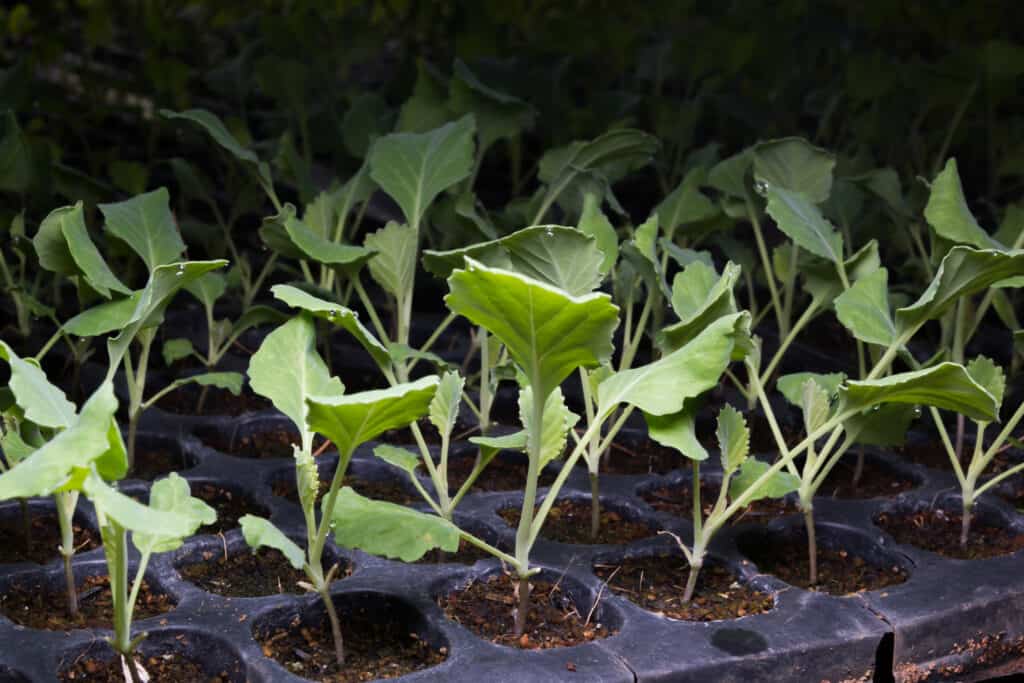
Kale grows best in the cool weather of spring and fall. Mature kale plants can tolerate temperatures as low as 10 to 20°F (-12 to -7°C).
Time kale seed sowing so that plants come to harvest before very warm and hot weather; hot weather will trigger bolting and seed-stalk formation.
Bolting can be slowed by picking the oldest leaves first, but the flavor of kale will suffer in warm and hot weather. The best-flavored kale has been touched by frost.
Kale matures in 55 to 65 days depending on the variety.

Kale planting details
- Sowing depth: ½ inch (12mm)
- Space between plant after thinning: 15-18 inches (30-45cm)
- Days to sprout: 5-10
- Days to harvest: 55-65 days for mature plants; small plants can be harvested at an edible size
- Storage period: 2-4 weeks
- Seeds per 100-row feet: ½ ounce (14 grams)
- Yield per 100-row feet: 50 pounds (20kg)
- Varieties: Vates Blue Curled, Dwarf Blue Scotch, Konserva, Siberian, Tuscan
Related articles of interest: How to Grow Kale
Kale sowing and planting tips
- Kale is grown from seeds or transplants.
- Kale seeds are viable for 4 years.
- Start kale indoors 10 to 6 weeks before the last spring frost; sow seed in early spring or late summer or a fall or winter crop.
- Sow seed ¼ to ½ inch (6-13mm) deep.
- Sow seeds 4 inches (10cm) apart; later thin seedlings to 16 to 18 inches (40-45cm) apart; use the thinnings in salads. Make sure there is good air circulation around maturing plants to avoid disease.
- Space plants 16 inches (40cm) apart in a staggered pattern or in rows 18 inches apart.
- Kale grows best in full sun but can tolerate light shade.
- Kale prefers a soil pH between 6.0 and 7.0.
- Seed germinates in 5 to 7 days at or near 70°F (21°C); sometimes seed can take up to 2 weeks to germinate if the soil is cold.
- If sowing seed in summer for fall harvest, place the seed in a folded damp paper towel placed in a plastic bag, and kept in the refrigerator for 5 days before sowing.
- Keep the soil evenly moist until seeds germinate then keep the soil moist until seedlings are well established; once plants are established mulch with straw to keep the roots cool and moist.
- Add aged compost to planting beds in advance of sowing; compost will feed the soil and aid moisture retention.
- Kale grows best when daytime temperatures are in the 60s°
- Kale can tolerate light frosts in the spring and freezes in the fall.
- Kale planted in the fall can winter over under straw and will begin growing again early in spring.
- Avoid planting kale where cabbage, broccoli, Brussels sprouts, or cabbage family crops have recently grown.
- Make successive sowings every few weeks for an extended harvest.
- Fertilize with an organic fertilizer such as fish emulsion at half strength.
- Aphids and flea beetles can attack kale.
Interplanting: Interplant kale with beets, leaf lettuce, onions, spinach, and Swiss chard.
Container Growing Kale: Grow kale in a container a minimum of 8 inches (20 cm) wide and deep.
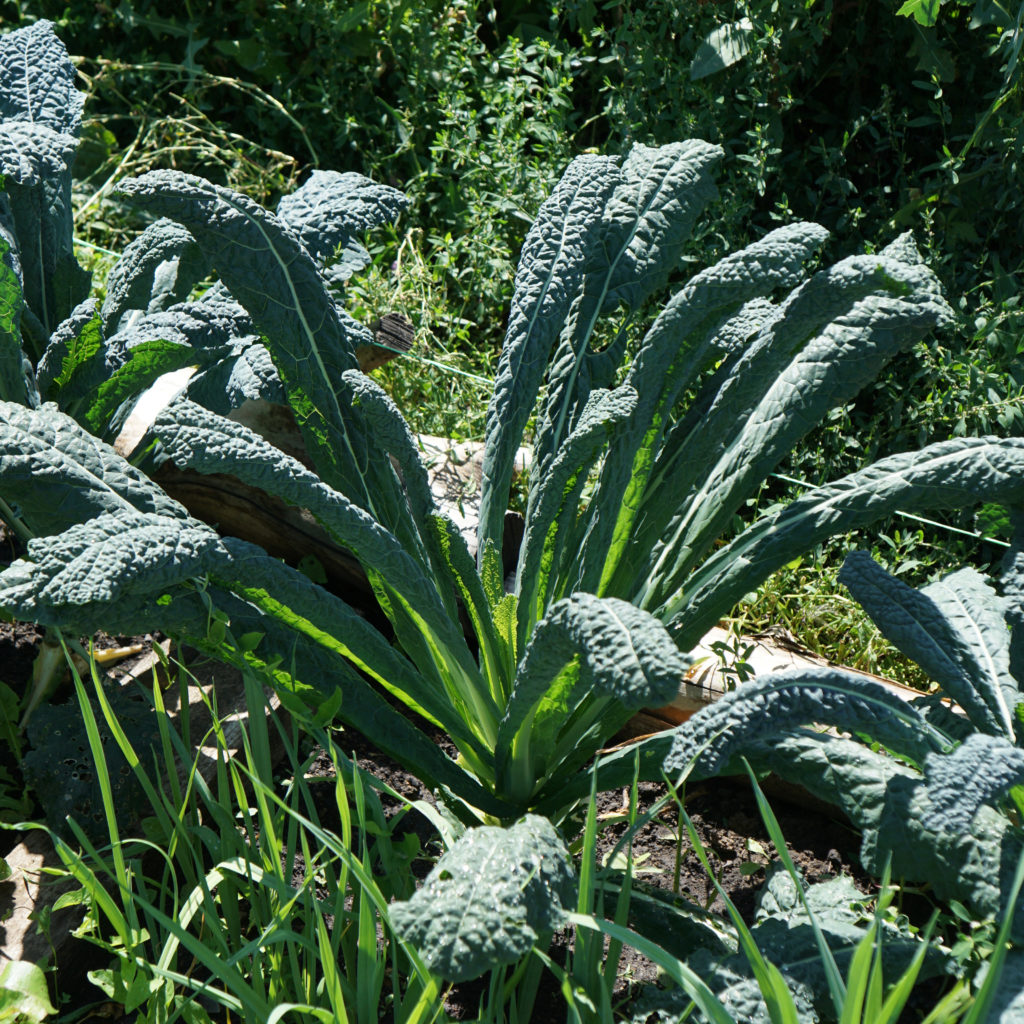
Kale planting calendar
Planting for spring harvest:
- 4-6 weeks before the last frost in spring: start seed indoors for transplant out later.
- 2-4 weeks before the last frost in spring: transplant seedlings into the garden.
- 2 weeks before the last frost in spring direct sow in the garden; the minimum soil temperature should be 45°F.
Planting for fall harvest:
- 12-14 weeks before the first frost in fall: start seed indoors.
- 8-10 weeks before the first frost in fall: transplant seedlings into the garden.
- 6-10 weeks before the first frost in fall: transplant seedlings into a plastic tunnel or cold frame.
Kale seed sowing dates for early season harvest
(These dates are for the Northern Hemisphere)
| Average date of the last frost | Planting dates |
| Jan. 20 | Jan. 1-Feb. 1 |
| Feb. 8 | Jan. 10-Feb. 1 |
| Feb. 18 | Jan. 20-Feb. 10 |
| Feb. 28 | Feb. 1-20 |
| Mar. 10 | Feb. 10-Mar. 1 |
| Mar. 20 | Feb. 20-Mar. 10 |
| Mar. 30 | Mar. 1-20 |
| Apr. 10 | Mar. 10-Apr. 1 |
| Apr. 20 | Mar. 20-Apr. 10 |
| Apr. 30 | Apr. 1-20 |
| May 10 | Apr. 10-May 1 |
| May 20 | Apr. 20-May 10 |
| May 30 | May 1-30 |
| June 10 | May 15-June 1 |
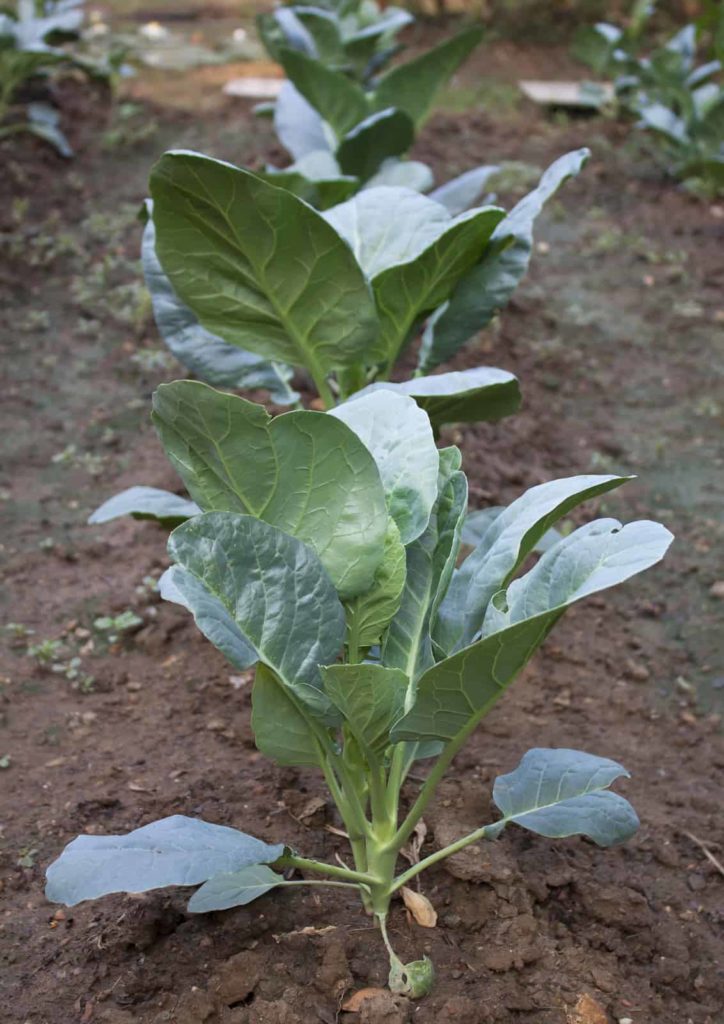
Kale recommended varieties
- ‘Red Russian’ purple stems, flat, smooth, grey-green leaves.
- ‘Toscano’ is also called dinosaur kale, dark green, savoy leaves.
- ‘Winterbor’ ruffly, blue-green leaves.
Botanical Name: Brassica oleracea
Kale is a member of the Brassicacea (Cruciferae) or cabbage family.
🥬 Kale Learning Hub
Start here: The Ultimate Kale Growing Guide: From Seed to Harvest
1. Types and Varieties of Kale
- Different Types of Kale Explained: Curly, Flat, Russian & Tuscan
- Best Kale Varieties for Different Climates
2. Planting and Timing
- Kale Seed Starting Tips
- When to Plant Kale for Fall, Winter, and Spring Harvests
- Succession Planting Kale for a Continuous Harvest
- How to Space and Thin Kale for Maximum Yield
- Zone-by-Zone Kale Planting Calendar
3. Seasonal Growing
- How to Grow Kale in Cold Climates and Overwinter Successfully
- Can You Grow Kale in Summer? Tips for Heat-Stressed Plants
4. Care and Maintenance
- How Much Water Does Kale Need? A Watering Guide
- How to Fertilize Kale for Lush Leaf Growth
- Best Companion Plants for Kale (And What to Avoid)
- How to Prune Kale for Continued Production
5. Container Gardening
6. Pests and Diseases
7. Harvest and Storage
- How to Harvest and Store Kale
- How and When to Harvest Kale Leaves for Best Flavor
- Tips for Extending Kale Harvest Through the Season
8. Kale in the Kitchen
Kale articles on Harvest to Table:
Garden Planning Books at Amazon:

